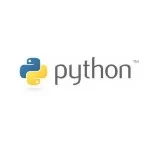PySpark – Create Empty Dataframe and RDD
DataFrames and RDDs (Resilient Distributed Datasets) are fundamental abstractions in Apache Spark, a powerful distributed computing framework. Let us delve into exploring Empty Dataframe and RDD in PySpark.
1. Understanding DataFrames in PySpark
DataFrames is a fundamental concept in PySpark, which is a Python API for Apache Spark, a distributed computing framework. DataFrames provide a high-level interface for working with structured and semi-structured data, similar to tables in relational databases.
1.1 Key Features of DataFrames
- Tabular Structure: DataFrames organize data into rows and columns, making it easy to work with structured data.
- Immutable: Similar to RDDs (Resilient Distributed Datasets), DataFrames are immutable, meaning their contents cannot be changed once created. However, you can transform them into new data frames using operations.
- Lazy Evaluation: PySpark uses lazy evaluation, meaning transformations on DataFrames are not executed immediately. Instead, they are queued up and executed only when an action is called, which optimizes performance.
- Rich Library Ecosystem: PySpark provides a rich library ecosystem for data manipulation, including functions for SQL queries, data cleaning, filtering, aggregation, and more.
1.2 Working with DataFrames in PySpark
Creating DataFrames in PySpark is straightforward. You can create a data frame from various data sources such as CSV files, JSON files, databases, or even from existing RDDs.
01 02 03 04 05 06 07 08 09 10 11 | from pyspark.sql import SparkSession# Create a SparkSessionspark = SparkSession.builder \.appName("example") \.getOrCreate()# Create a DataFrame from a list of tuplesdata = [("John", 25), ("Alice", 30), ("Bob", 35)]df = spark.createDataFrame(data, ["Name", "Age"])df.show() |
This code creates a DataFrame from a list of tuples containing names and ages, and then displays the DataFrame using the show() method.
2. Understanding RDDs in PySpark
RDDs (Resilient Distributed Datasets) are a fundamental abstraction in PySpark, the Python API for Apache Spark, designed for distributed data processing. RDDs represent immutable, distributed collections of objects that can be operated on in parallel across a cluster.
2.1 Key Features of RDDs
- Resilience: RDDs are resilient to failures. They automatically recover lost data partitions by recomputing them based on the lineage of transformations.
- Distributed: RDDs are distributed across multiple nodes in a cluster, enabling parallel processing of data.
- Immutable: Once created, RDDs cannot be changed. However, you can apply transformations to RDDs to create new RDDs.
- Laziness: Similar to DataFrames, RDD transformations are lazy, meaning they are not executed immediately but queued up for execution when an action is triggered.
- Low-level Operations: RDDs provide low-level operations such as
map,filter, andreduce, allowing fine-grained control over data processing.
2.2 Working with RDDs in PySpark
Creating RDDs in PySpark is typically done by parallelizing an existing collection (e.g., a Python list) or by loading data from external sources such as files or databases.
01 02 03 04 05 06 07 08 09 10 11 | from pyspark.sql import SparkSession# Create a SparkSessionspark = SparkSession.builder \.appName("example") \.getOrCreate()# Create an RDD from a Python listdata = [1, 2, 3, 4, 5]rdd = spark.sparkContext.parallelize(data)rdd.collect() |
This code creates an RDD from a Python list and collects the elements of the RDD back to the driver node.
3. Create an Empty DataFrame and RDD
To create an empty DataFrame and an empty RDD in PySpark, you can use the following code snippets:
01 02 03 04 05 06 07 08 09 10 11 12 | from pyspark.sql import SparkSession# Create a SparkSessionspark = SparkSession.builder \ .appName("example") \ .getOrCreate()# Create an empty DataFrameempty_df = spark.createDataFrame([], schema=["col1", "col2"])# Create an empty RDDempty_rdd = spark.sparkContext.emptyRDD() |
In the code above:
spark.createDataFrame([], schema=["col1", "col2"])creates an empty DataFrame with specified schema. You can replace “col1”, “col2” with the column names you want.spark.sparkContext.emptyRDD()creates an empty RDD using the SparkContext.
Both empty_df and empty_rdd are now empty DataFrame and RDD respectively.
4. Conclusion
In conclusion, we explored two fundamental abstractions for distributed data processing: DataFrames and RDDs (Resilient Distributed Datasets).
DataFrames provide a high-level, tabular data structure that facilitates working with structured and semi-structured data in a distributed environment. With its rich library ecosystem and SQL-like interface, DataFrames offer simplicity and ease of use, making them ideal for a wide range of data manipulation tasks.
On the other hand, RDDs offer a lower-level abstraction that provides more control and flexibility over distributed data processing. While less intuitive than DataFrames, RDDs are essential for scenarios requiring fine-grained operations or when working with unstructured data.
Whether you choose DataFrames for their simplicity or RDDs for their flexibility, PySpark empowers you to efficiently process large-scale data across distributed clusters. By leveraging these powerful abstractions, you can tackle complex data processing tasks and unlock insights from big data with ease.
With its robust capabilities and growing community support, PySpark continues to be a leading choice for scalable and distributed data processing in industries ranging from finance and healthcare to e-commerce and beyond.



